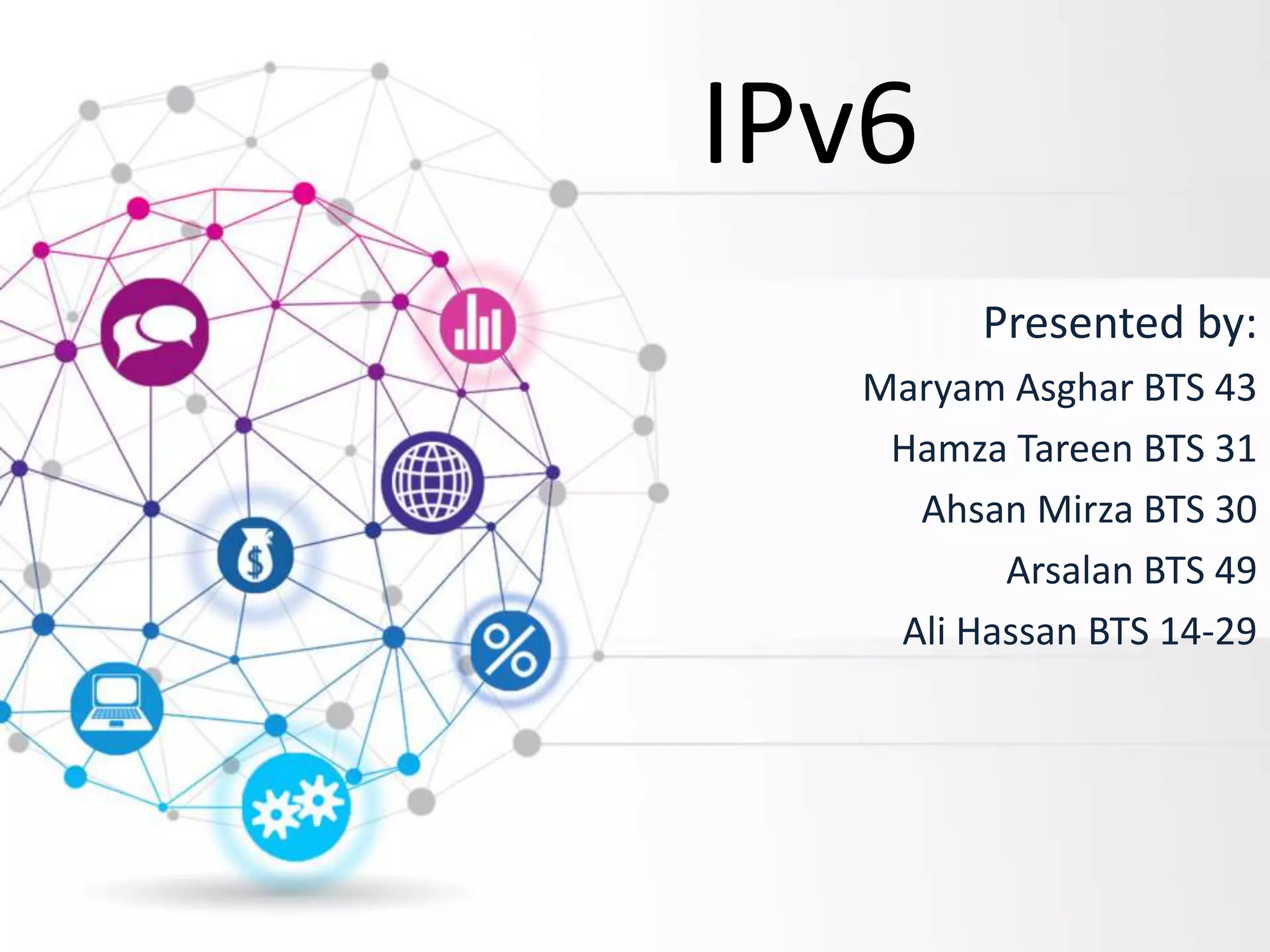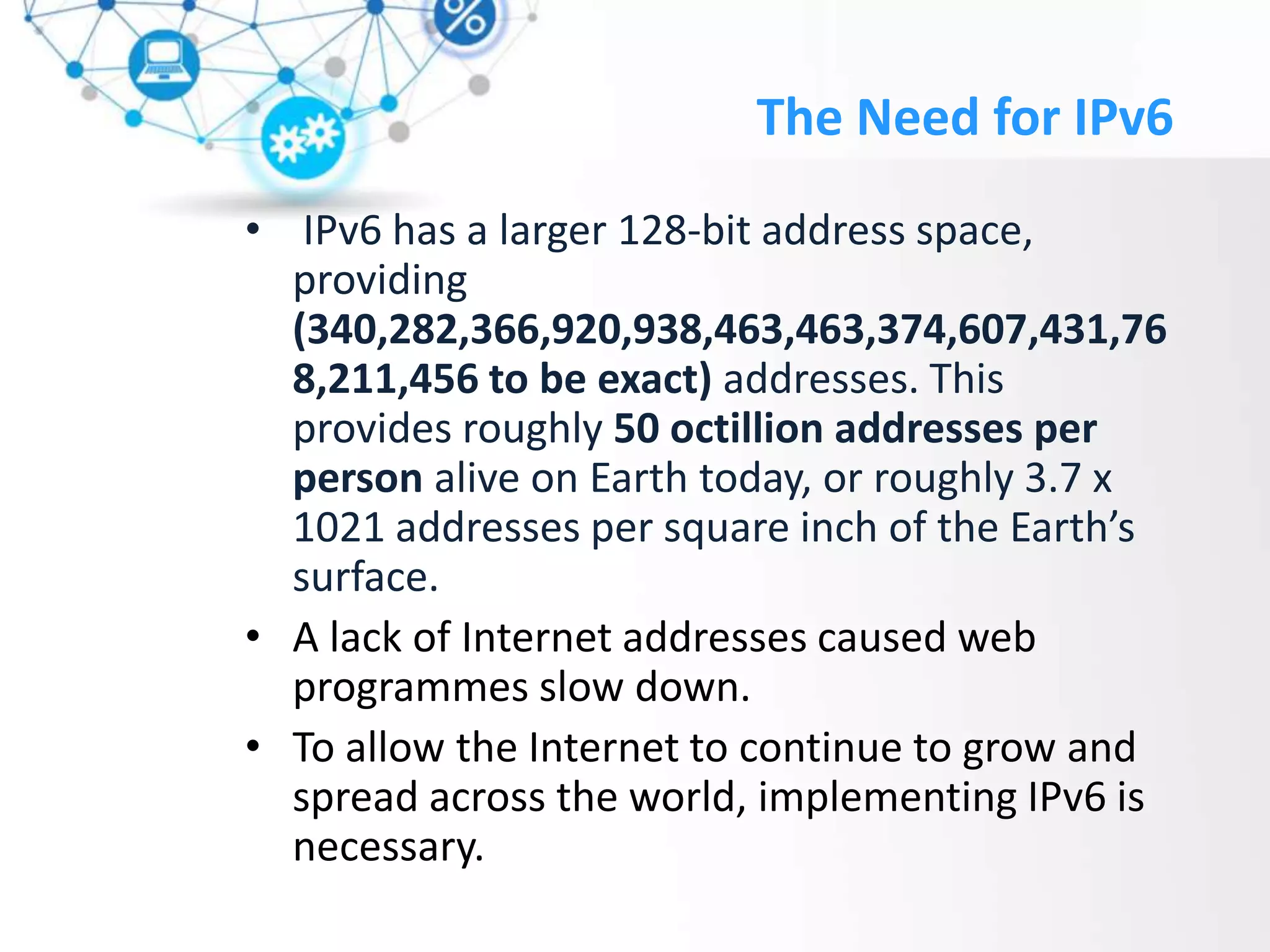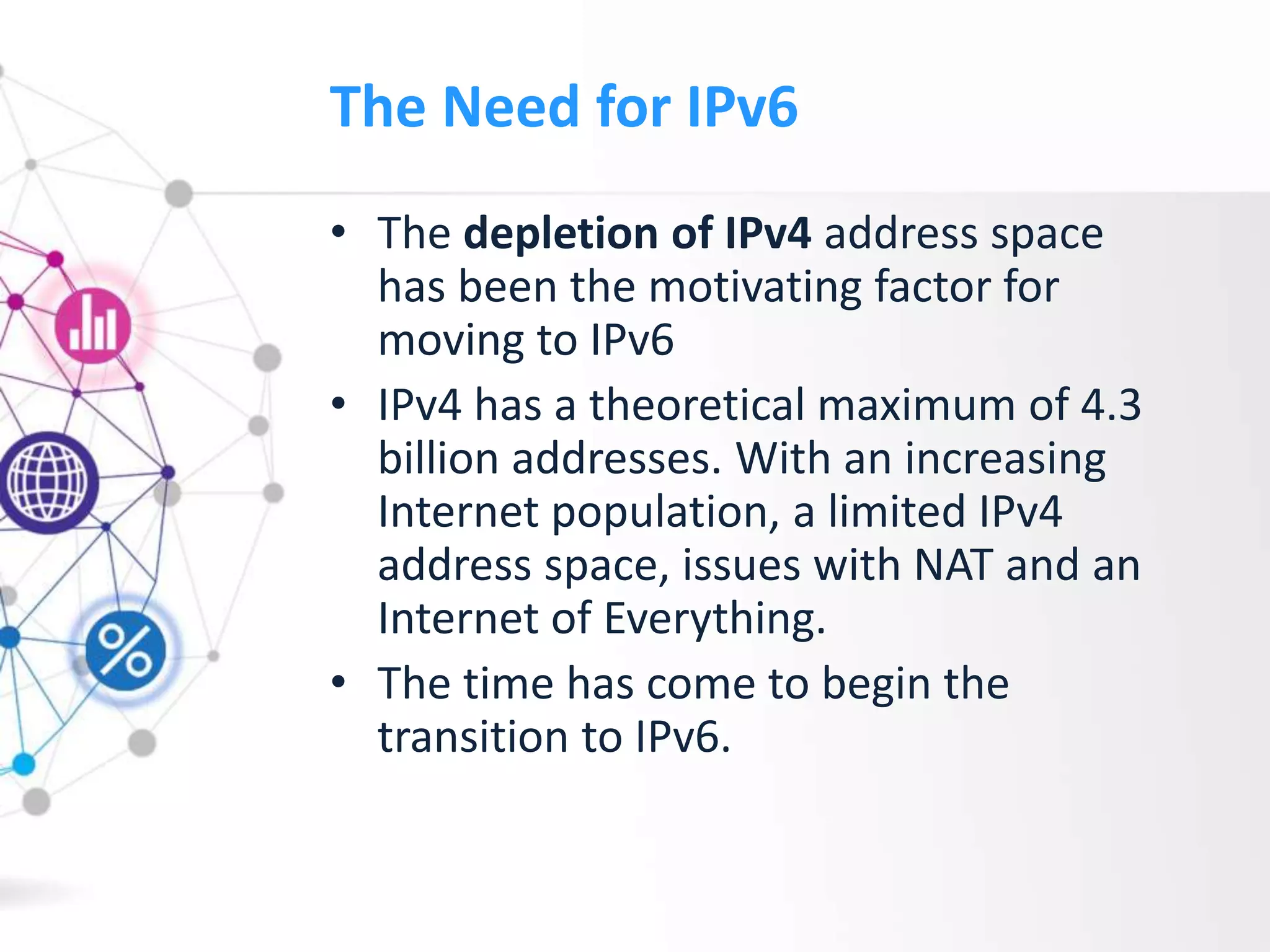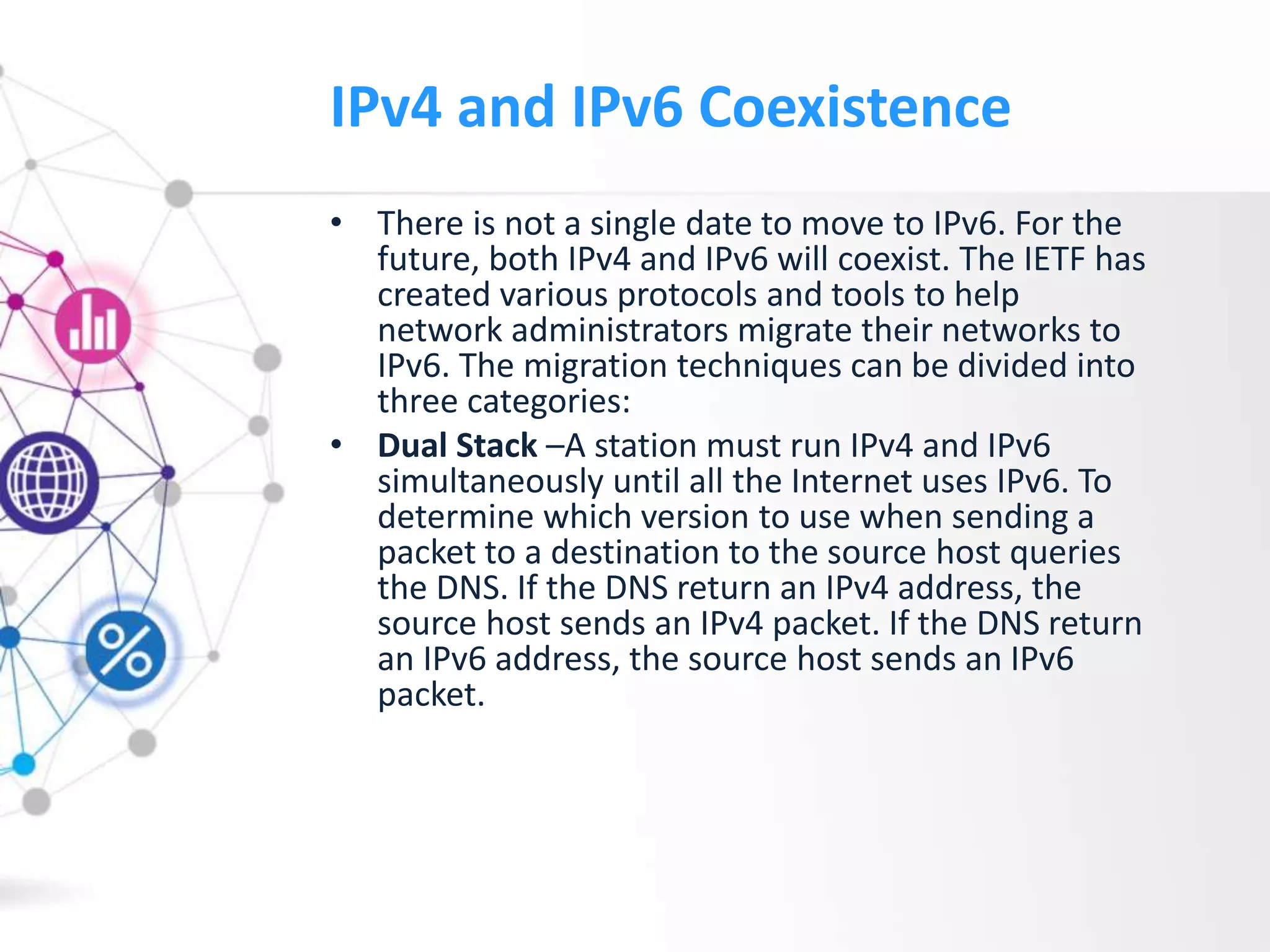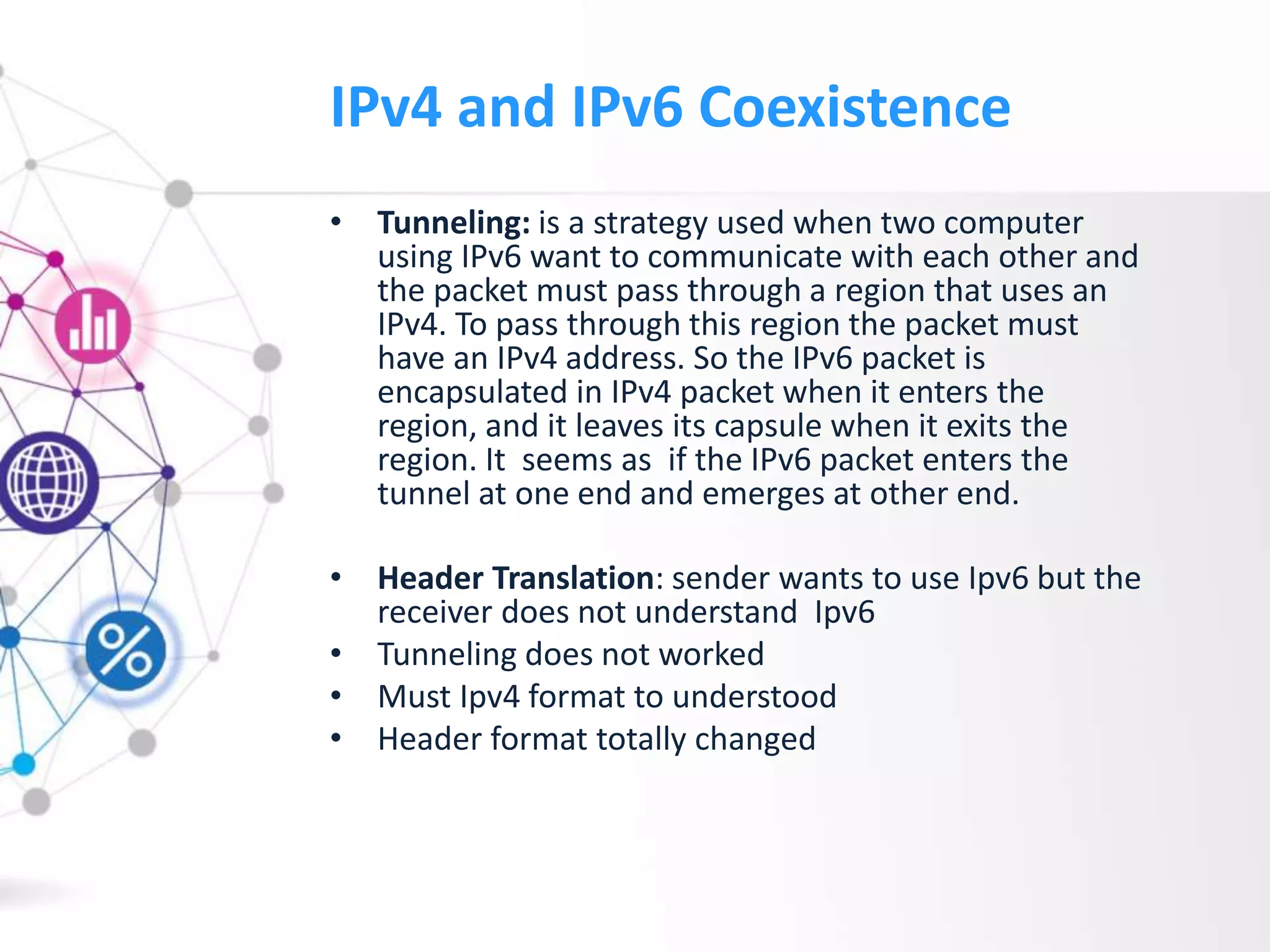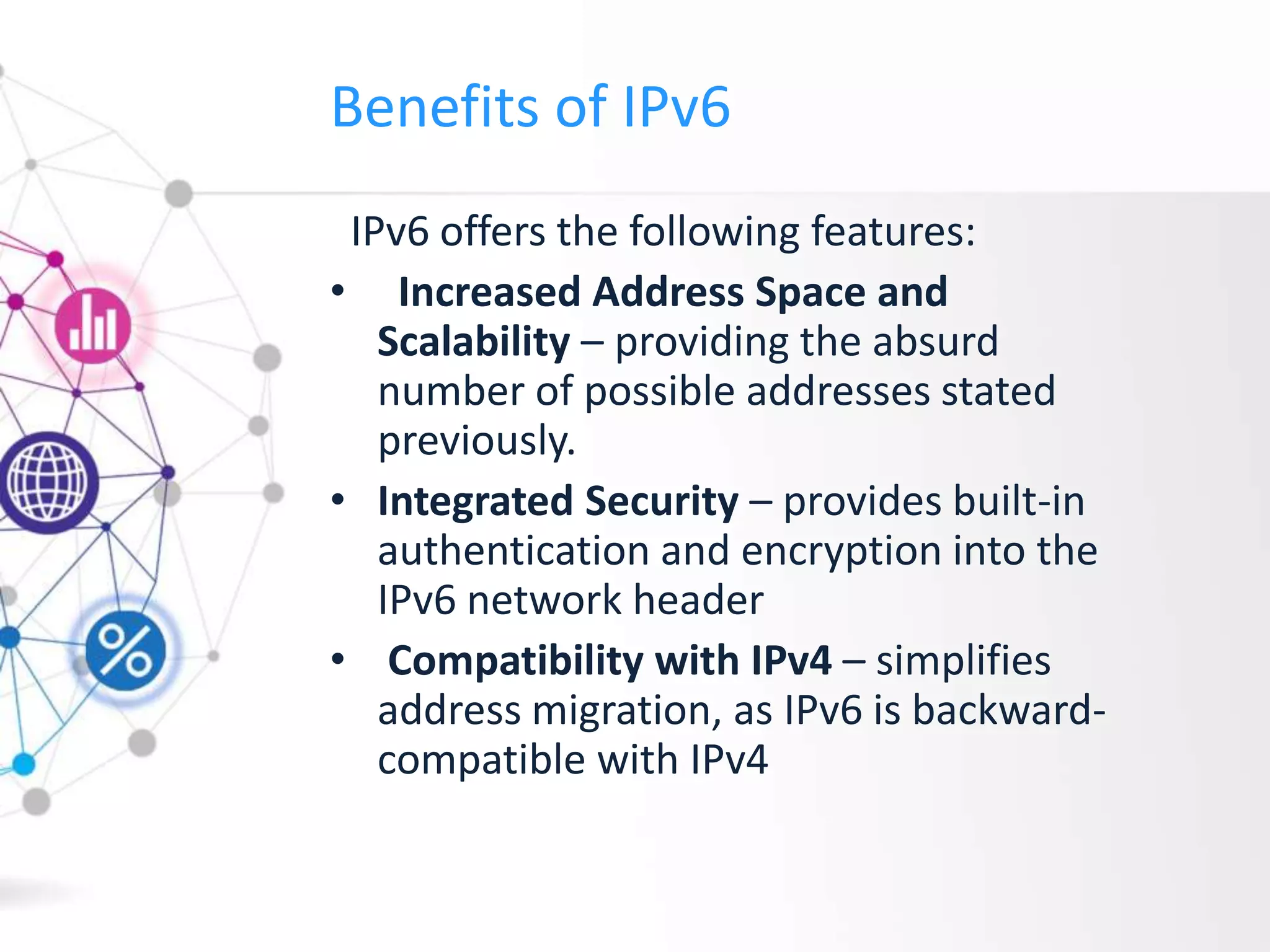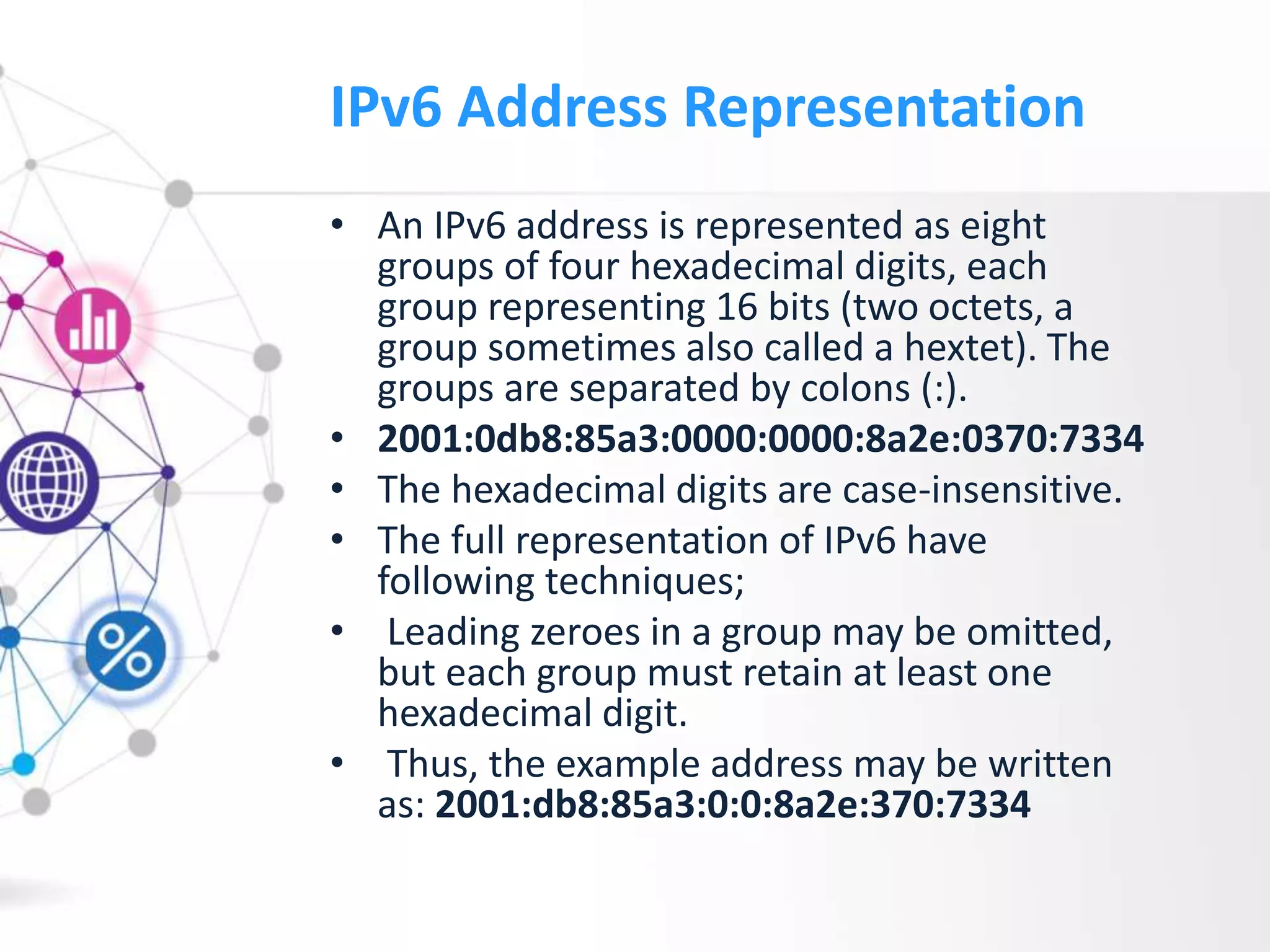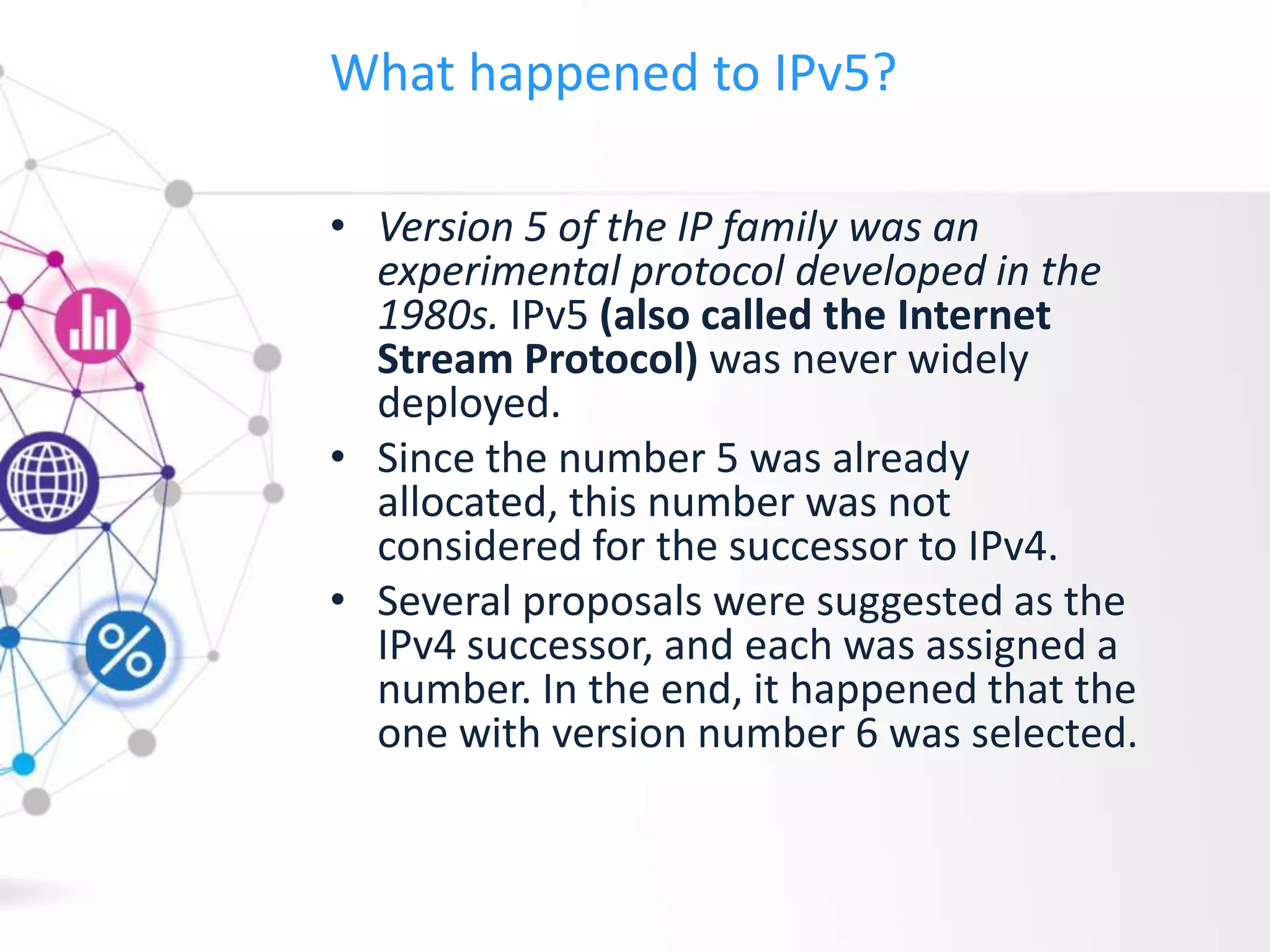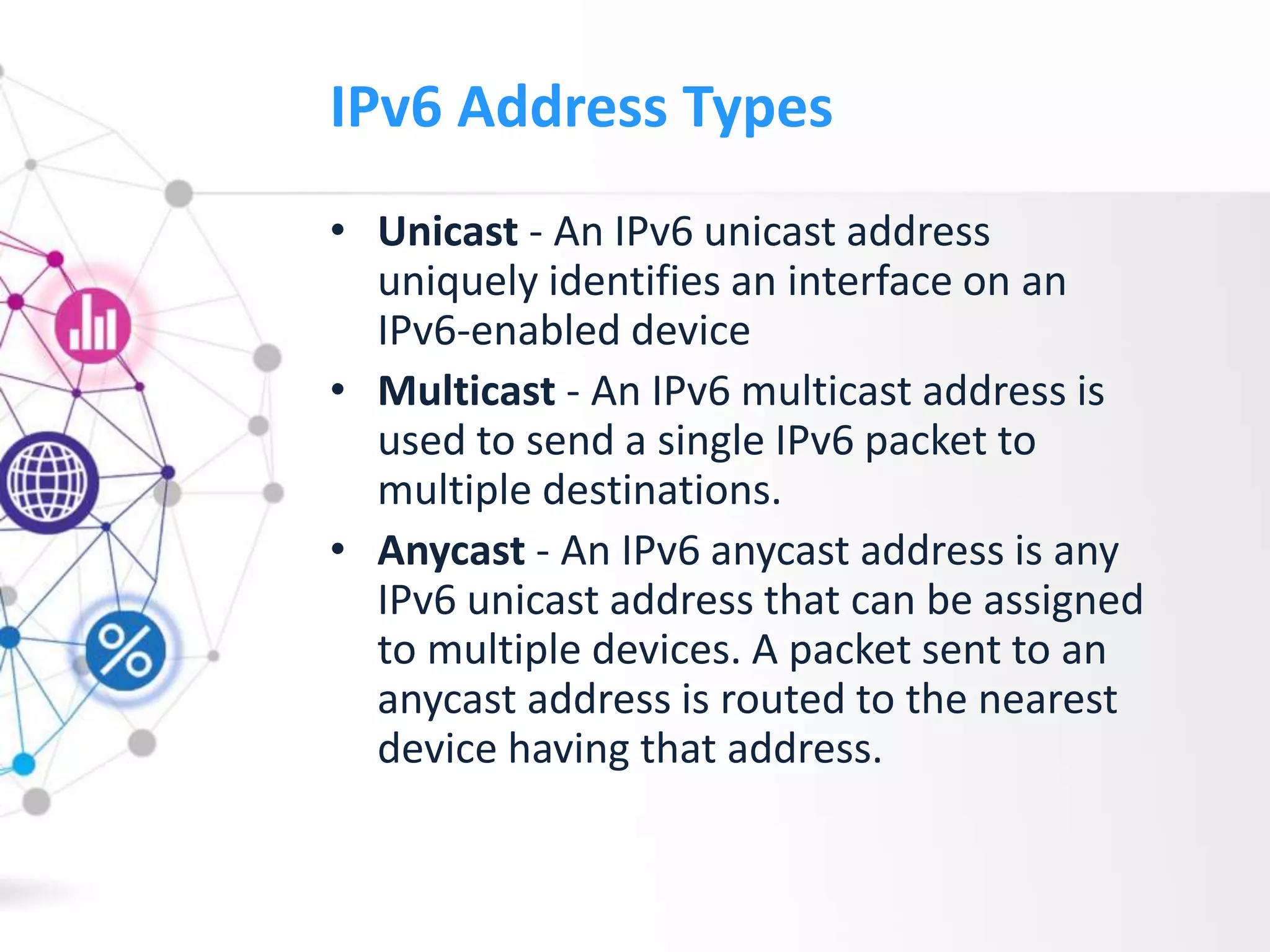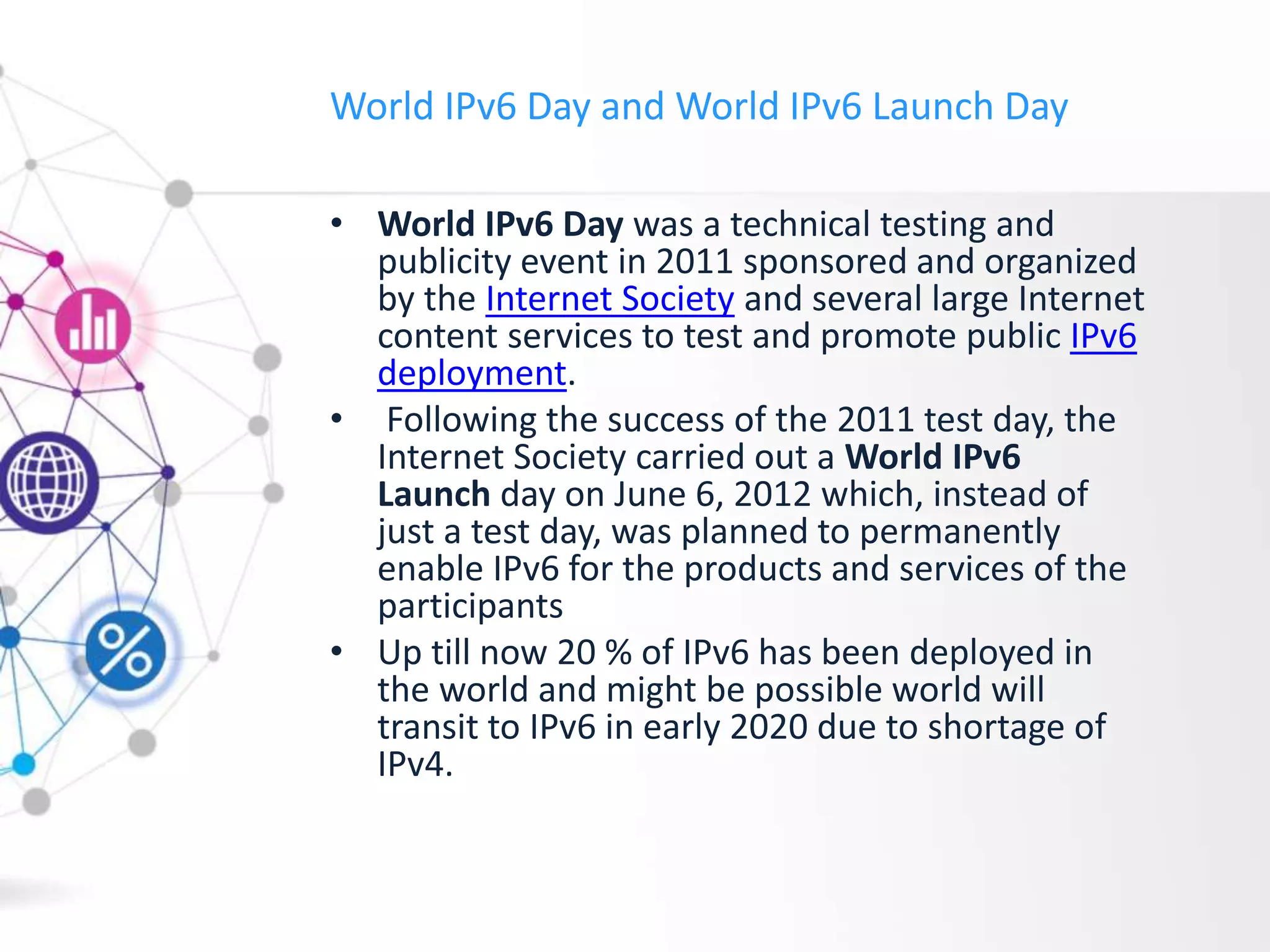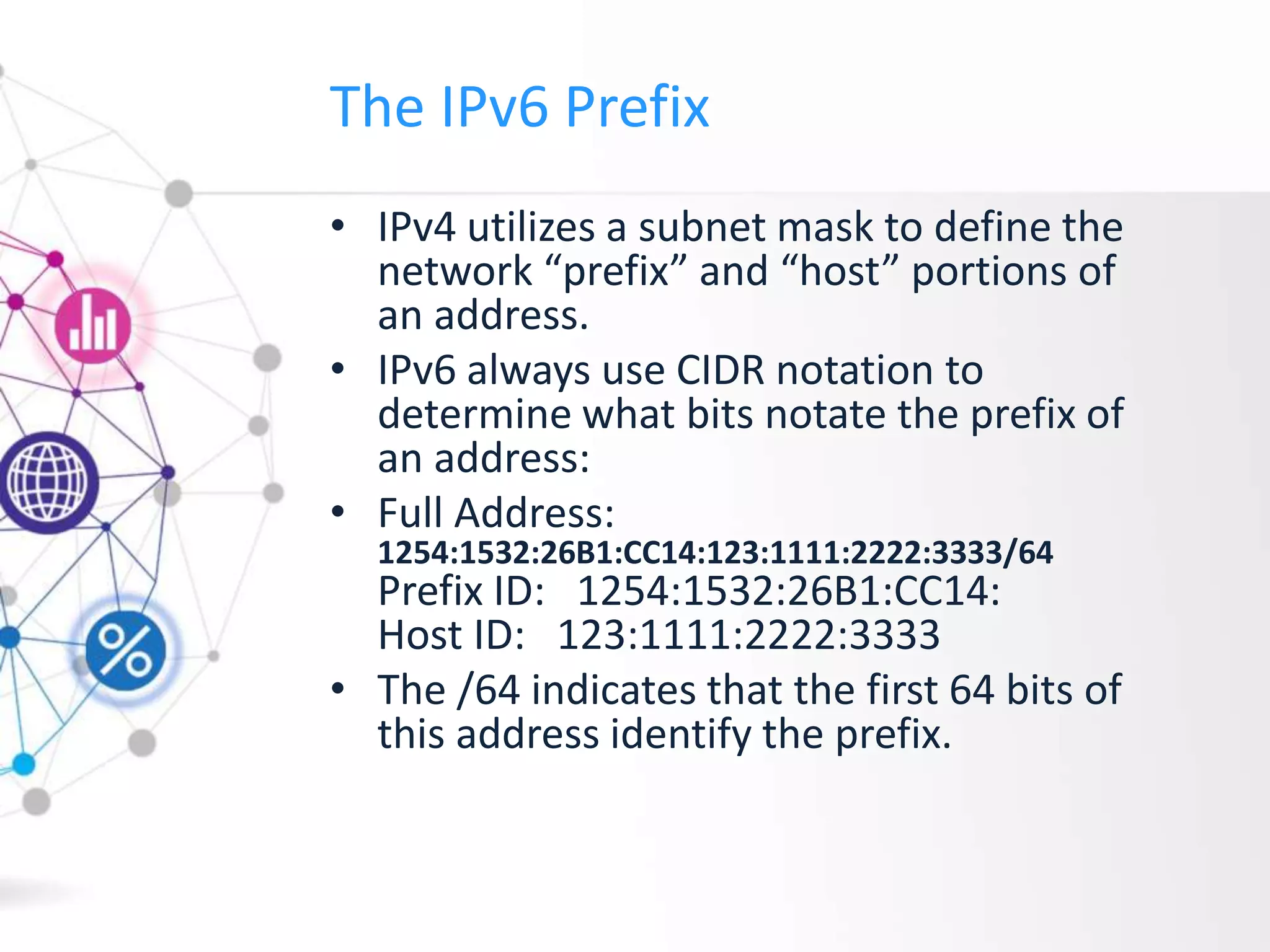The document discusses the transition from IPv4 to IPv6, highlighting the larger address space of IPv6 with its 128-bit structure, necessary due to the depletion of IPv4 addresses. It outlines coexistence strategies for both protocols, including dual stack, tunneling, and header translation, along with the advantages of IPv6 such as increased scalability and integrated security. The document also mentions World IPv6 Day and the ongoing adoption of IPv6, which is crucial for accommodating the growing internet population.
